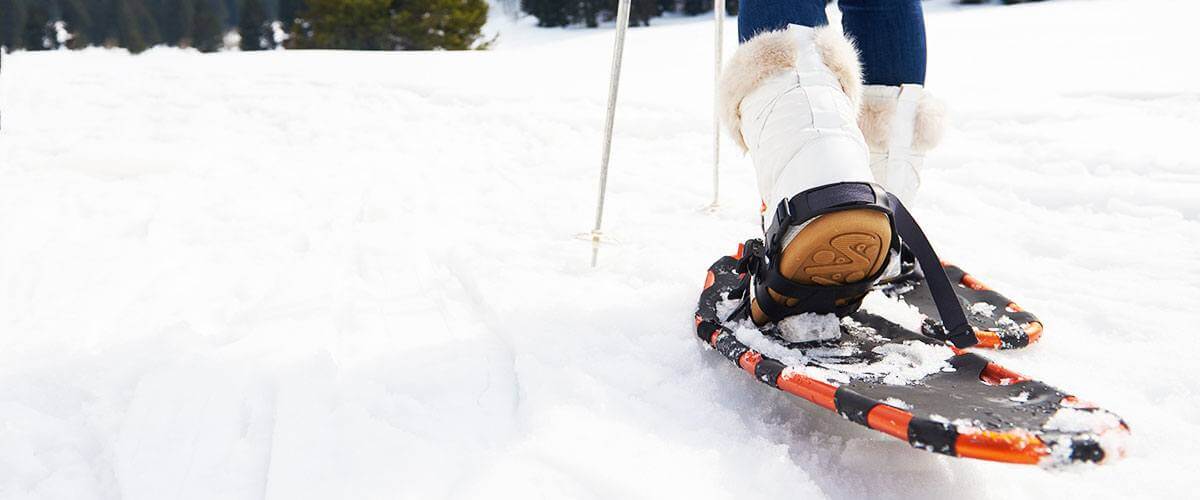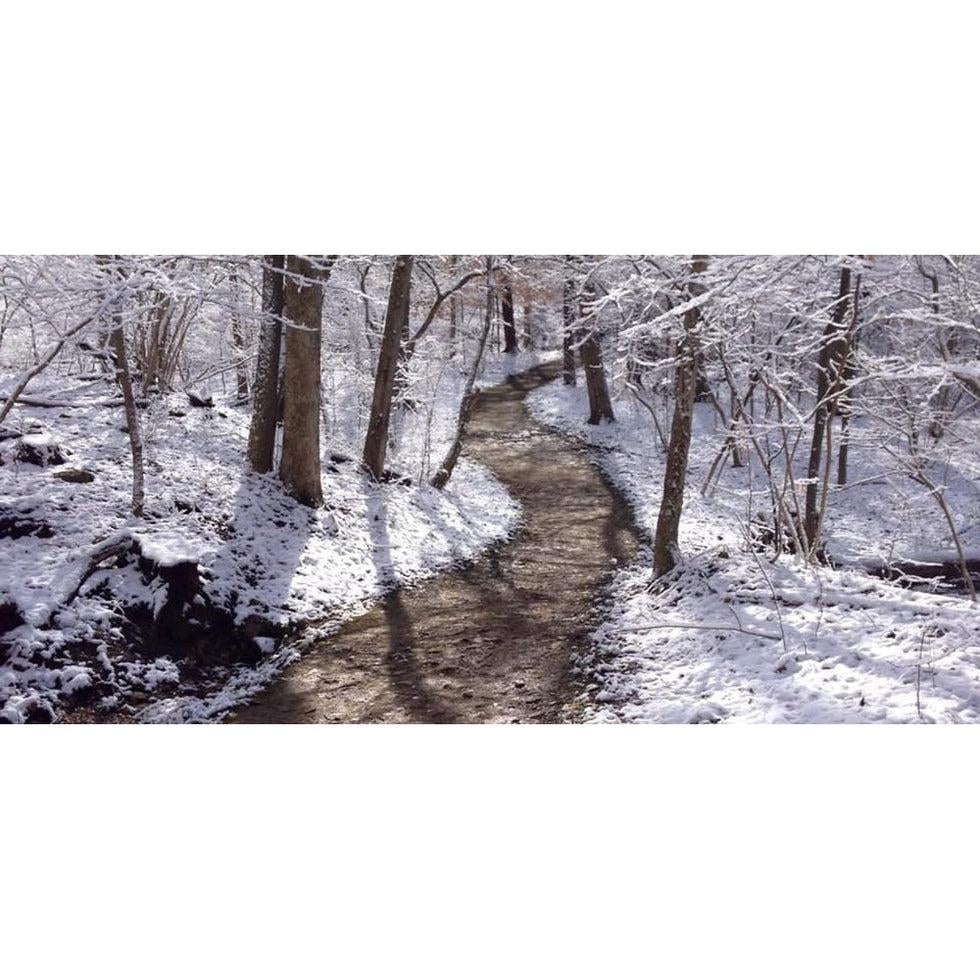By Dan Mackey, MS
A musician known for his love of the outdoors, John Denver sang about the cold winter with all of its snow trying to get him down. Denver wasn’t the only one who has experienced the uncertain doldrums of this season. Living in Northeast Ohio, we’ve all had this feeling, in one way or another. When the sun rarely shines, the wind whips and chills you to the bone, the snow piles up inch after inch, and some years, foot after foot, and Old Man Winter seems to linger on and on. They call it the Winter Blues. During this lengthy season it’s easy to hunker down, build a fire in the fireplace, and fall into hibernation mode, where leaving the house even to drive to the gym seems like a great feat.
I will admit motivating yourself to venture outside during the winter months can be a very difficult task, and it can be much easier to wait out the snow inside, on your couch. However, I’m here to tell you that not only would you be missing out on some of the best opportunities to spot wildlife like Red Fox, White Tailed Deer, Great-horned Owls, and Ring-necked Pheasants, but you’d also miss out on the most beautiful moments of solitude. Throughout my years as an avid outdoorsman and my countless hikes alone in the wilderness, I’ve found that there’s nothing quite like hiking in the winter, when all is calm and everything is seemingly at peace.

Unlike hiking throughout any other season, hiking during the winter takes considerable more preparation and understanding. Don’t get me wrong, there’s a lot to prep for no matter what season you’re hiking in, it’s just that the winter adds a myriad of other elements that pose problems needing to be addressed. First and foremost, it is crucial to have a solid grasp on where you will be hiking. Whether you’re summiting Shadow Mountain in the Rocky Mountain National Park or traversing Wetmore Trail here in our own Cuyahoga Valley National Park, it is vital to be skilled in navigation and knowing how to follow trail markers, as well as being able to read a map. While these skills are important for hiking anytime of the year, the winter months lead to landscape changes and what was once an easy, familiar trail can quickly turn into the great unknown. In addition, it’s important to simply know what trails are, in fact, open during the winter. Many remain open year round, but there’s always a chance that some may be closed due to poor conditions, full park closures, or even due to reasons surrounding certain wildlife in that area. Anyway, be sure to always check in advance before departing on your hike.
A more blatant difference between winter hiking and hiking in any of the other seasons resides in the specific gear that you will utilize in order to have an enjoyable trek. Of course there will be some overlap, but the winter calls for a number of specific pieces. First, let’s talk about boots. There are specific winter hiking boots, like the Vasque Snowburbans or Snowblimes, or The North Face Chilkat boots. These boots are lined with insulation designed to keep your feet warm while trekking through snow for extended periods. In addition, they are outfitted with a waterproof liner to keep your feet dry and gaiter-compatible “D-rings.” These boots are also great to wear while snowshoeing through three feet of snow. Speaking of which, this brings us to the next winter specific piece of gear; snowshoes. While designed and constructed differently than the original style of snowshoes, they function in the same manner.
Snowshoes allow you to walk on top of deep snow without sinking in step after step. Most of today’s snowshoes are made of lightweight aircraft aluminum and hypalon (a synthetic rubber), rather than wood and leather. In my opinion, the best brand of snowshoes is Crescent Moon. At Crescent Moon, they are largely focused on not only building an awesome snowshoe, but also on creating something that is super environmentally friendly. At a minimum, 85% of the aluminum and stainless steel used in their construction is from recycled metal, 100% of the energy they use is wind generated energy, the plastics in their snowshoes have no PVC, VOCs, and plasticizers and are 100% re-used or recycled, and they can repair nearly any problem that may arise with their product. These are top-of-the-line snowshoes from a company that truly cares about saving the environment.
Snowshoes allow you to walk on top of deep snow without sinking in step after step. Most of today’s snowshoes are made of lightweight aircraft aluminum and hypalon (a synthetic rubber), rather than wood and leather. In my opinion, the best brand of snowshoes is Crescent Moon. At Crescent Moon, they are largely focused on not only building an awesome snowshoe, but also on creating something that is super environmentally friendly. At a minimum, 85% of the aluminum and stainless steel used in their construction is from recycled metal, 100% of the energy they use is wind generated energy, the plastics in their snowshoes have no PVC, VOCs, and plasticizers and are 100% re-used or recycled, and they can repair nearly any problem that may arise with their product. These are top-of-the-line snowshoes from a company that truly cares about saving the environment.

In addition to snowshoes, there are numerous other devices that attach to boots designed to aid in traction for slippery, icy conditions. There are a myriad of different products to choose from; MicroSpikes, NanoSpikes, Yaktrax, and Stabilicers, all of which are types of ice and snow cleats that improve traction on existing boots. So when you’re planning your hike down the Grand Canyon this winter, be sure to swipe a pair of MicroSpikes. They might just save your life.
Lastly, and possibly most importantly, winter hiking requires certain articles of clothing and layering pieces used to not only keep your body warm and comfortable, but also safe and alive. When hiking during any season cotton can be your worst enemy. This type of fabric is known to hold moisture rather than wick it away from the skin, and does not insulate at all. Chances are you will encounter cold air, cold wind, snow, and ice. In order to maintain a safe level of warmth and comfort, layering is going to be your best bet. So, starting with your base layer next to your skin, you’ll want something warm, lightweight, and capable of wicking moisture. Two of the best options are either the synthetic Patagonia Capilene, or the all-natural Smartwool merino wool base layers. Both types will provide warmth while simultaneously pulling moisture away from the body. This is important because wetness on your skin can lead to frostbite and hypothermia, as well as just make you cold. Whatever you do…stay away from cotton! Next, as your mid layer you’ll want a piece that insulates something like a Marmot windstopper jacket, or The North Face ThermoBall will suit you just fine. Lastly, for your outer layer, a lightweight hardshell jacket that is breathable will provide a garment to protect you from the wetness and keep you dry.

Now that we’ve gone through the proper layers of clothing for your body, it is important to note a number of other items crucial to safe winter hiking. Merino wool hiking socks are extremely important. Again, merino wool is a moister-wicking, natural material that will prevent your feet from blistering while also keeping them warm. Winter hats and gloves are an obvious item to bring whenever hiking during the winter, but still valuable to note.

Last, but not least, are gaiters. I mentioned these earlier when talking about boots. Gaiters go around your ankles and keep the snow out of your pants and boots. There are knee-high gaiters, better for really deep snow, and shorter gaiters, better for less snow. Either way, this piece of gear helps to have an enjoyable winter hike.
Now, I know that not everyone is going to have all this gear just laying around at home, waiting to get pulled out for the winter, but that’s what Appalachian Outfitters is for. At our store we not only will provide you with any and all of the gear that you might possibly need for safe, fun winter hiking, but we’ll also educate you about the specific gear you might be looking for. We also offer a snowshoeing and winter traction course once each winter. Stop in soon to see everything Appalachian Outfitters has to offer so you’ll be ready for winter hiking. For more information about any of the items mentioned, as well as additional hiking gear for all seasons, visit one of our two location.

